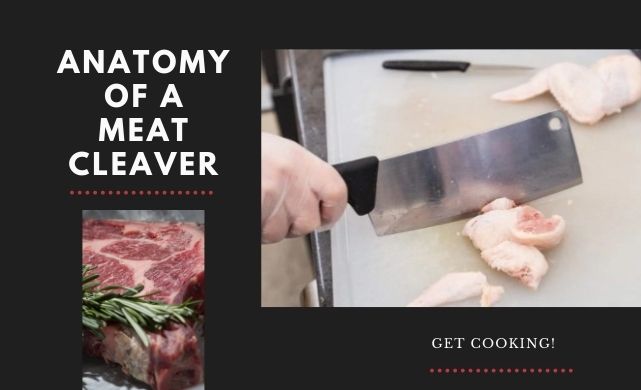Anatomy of a Meat Cleaver
A traditional meat cleaver is a broad, heavy knife featuring a large, rectangular blade that is primarily used for butchering due to its ability to cut through bones, cartilage, and thick cuts of meat. Although there aren’t many kitchen tasks where a cleaver outperforms a good chef’s knife, there are certain situations where a cleaver truly shines. Its weight and size make it the perfect tool for tasks that could potentially damage or excessively wear down your chef’s knife. Chopping through whole chickens, lobsters, or even large squashes are all ideal uses for a meat cleaver.
When is it essential to have a meat cleaver in your professional knife collection? If you’re regularly making stocks, a cleaver will see frequent use, helping you expose more bone and meat to the water for enhanced flavor extraction. Once you’ve added a cleaver to your arsenal, you might find yourself using it for other everyday kitchen tasks. It’s particularly effective for mincing raw meat, crushing garlic, chopping cooked bone-in meat into bite-sized pieces, and even cracking coconuts. The flat end of the cleaver blade can also serve as a handy scraper to gather chopped ingredients or to flatten and tenderize meat cutlets.
If you're thinking about adding a professional meat cleaver to your cutlery collection, here are some key factors to consider:
Weight – Cleavers can vary significantly in weight, and a medium-weight cleaver offers enough heft to handle most tasks without becoming overly cumbersome or causing user fatigue.
Blade Size – A blade shorter than 6-3/4 inches might struggle with larger items like squash, while a blade that's too long may make it difficult to butcher smaller meat items like chicken parts effectively.
Blade Design – Pay attention to the thickness, edge, and edge angle of potential cleavers. Some cleavers come with a straight edge, while others have a slightly curved edge, which can be easier on the user. The thickness and edge angle of a cleaver greatly influence its durability and perceived sharpness. Thicker blades tend to last longer but can feel less precise and more forceful when cutting, making them less versatile for some tasks.
Handle – The size of the handle can impact how easy the cleaver is to use. A handle that’s too small can make tasks requiring strength and power more challenging. It’s also crucial that the handle material provides a secure grip since cleavers are more unwieldy than most other professional knives.
NSF Meat Cleavers – If NSF certification is important for your business, ensure that any cleaver you choose is NSF certified.
While a meat cleaver isn’t necessary for every foodservice operation, when it’s the right tool for the job, there’s no substitute for a high-quality cleaver to get the task done efficiently.

Keywords: professional meat cleavers
Outdoor Portable Wood Fired Pizza Oven,12 Inch Wood Fired Pizza Oven,16 Inch Wood Fired Pizza Oven
Ningbo Yinzhou Weinuo Machinery Manufacturing Co., Ltd. , https://www.gftopoven.com




